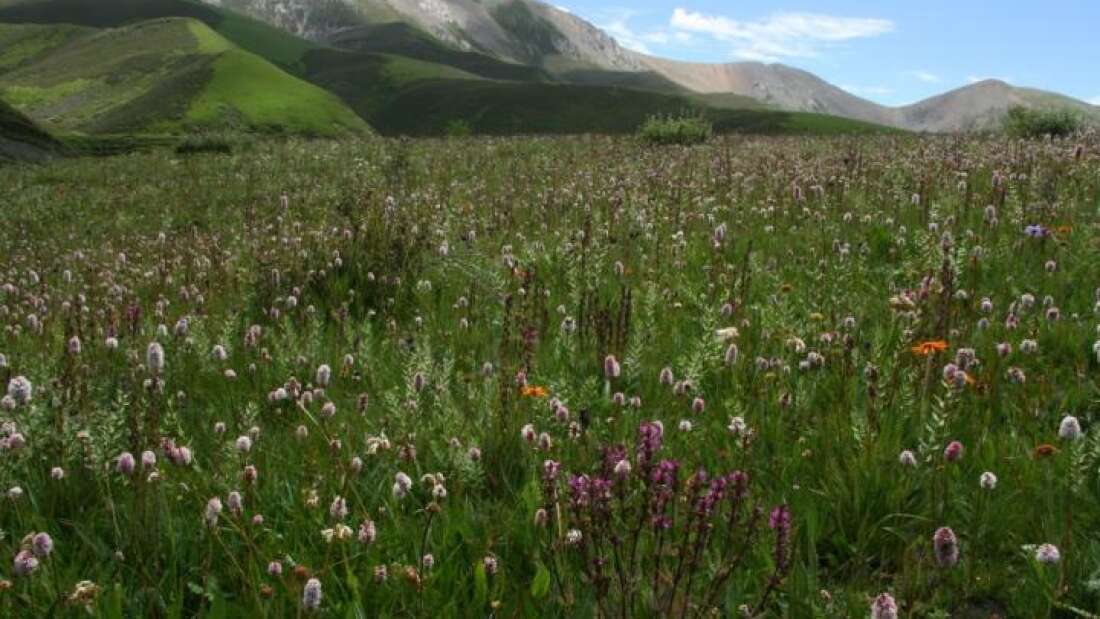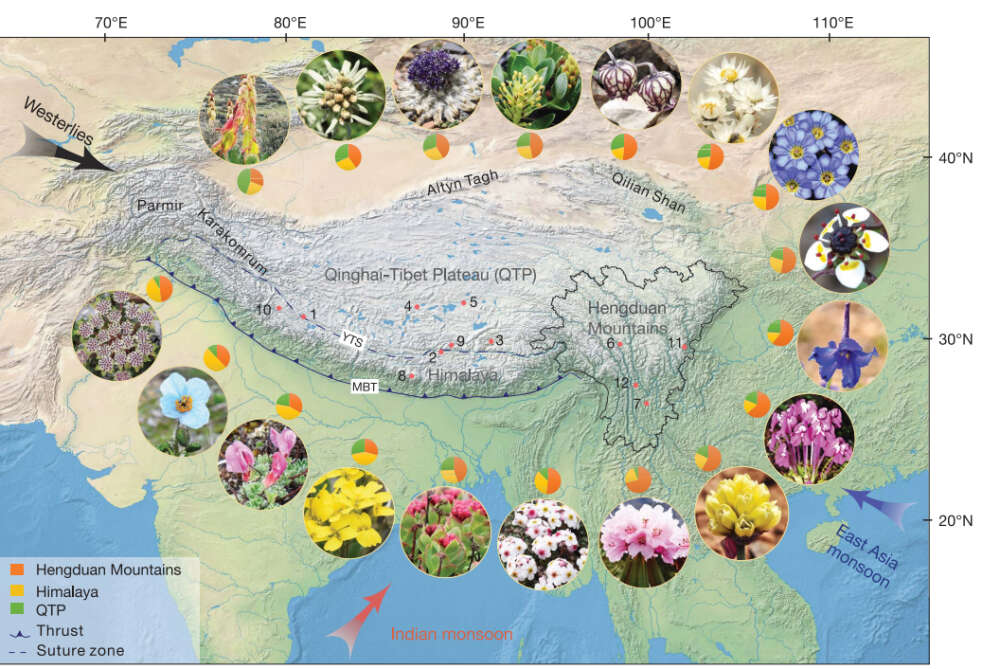
The flowers thriving high in the Hengduan Mountains are from families three times as old as in any other alpine ecosystem, besides nearby regions these plants have colonized.
Mountaintops are unusually rich in the diversity of life they support, but not so good for longevity. Today, alpine ecosystems are among the most vulnerable to rapid warming – unlike lowland plants, those that live near the peaks have nowhere to go as their environments heat up. The rise and fall of the mountains they occupy represent another threat.
Nevertheless, Professor Xing Yaowu of the Xishuangbanna Tropical Botanical Garden has found that the Hengduan Mountains, the southeastern part of the Tibet-Himalaya-Hengduan (THH) bio-region, hosts ancient plant lineages.
By constructing the time-calibrated family trees of 18 groups of flowering plants, Xing reports in Science that existing families of plants were establishing themselves above the tree line in Hengduan 30 million years ago, a date that matches geologic evidence of the mountains' origins.
"Our historical reconstructions indicate that an alpine flora had emerged in the THH region by the early Oligocene,” Xing said in a statement. By the mid-Miocene some 17 million years ago, the plants were spreading to the rest of the THH.

Hengduan is overshadowed in the public mind by the Himalayas and Tibet, but when it comes to plant diversity it is the originator. Eighteen plant species clockwise (Rheum, Leontopodium, Saussurea, Salix, Caryophyllaceae, Anaphalis, Gentiana, Saxifragaceae, Delphineae, Pedicularis, Allium, Rhododendron, Primuloideae, Rhodiola, Draba, Chesneya, Meconopsis, and Pleurispermum) with pie charts showing the proportion of species in each clade found in each region. Ding et al/Science
By comparison, Rocky Mountain alpine plant communities are thought to be 10 million years old, previous alpine flora having been wiped out entirely by changing climate conditions. Other alpine communities are much younger still.
Older ecosystems are usually biologically richer than younger ones with similar conditions, simply because plants and animals have had time to diversify. Hengduan is a contender for hosting the greatest biological diversity of any alpine ecosystem – for example, playing host to more than 3,000 species of alpine seed plants.
“It's a relatively small area that harbors one-third of all the plant species in China," said co-author Dr Richard Ree of the Field Museum. The Páramos region in the tropical Andes is its only competitor in this regard.
The intensification of the Asian summer monsoon 14-17 million years ago is thought to have spurred a burst of alpine diversification in Hengdong. Newly formed rivers that split habitats in two with evolution going in different directions on either side.
Yet for all this longevity and richness, the paper notes: “The Hengduan Mountains region is considered one of the most vulnerable of all global biodiversity hotspots,” as a result of climate change and local human activity.
"This study sheds light on the conditions under which we get rich versus poor biodiversity," Ree said. "Mountain ecosystems tend to be very sensitive to things like global warming... Understanding how historical environmental change affected alpine plants twenty million years ago can help us predict how today's climate change will affect their descendants."
URL: https://www.iflscience.com/plants-and-animals/one-mountain-range-hosts-alpine-plant-communities-far-older-than-anywhere-else/


